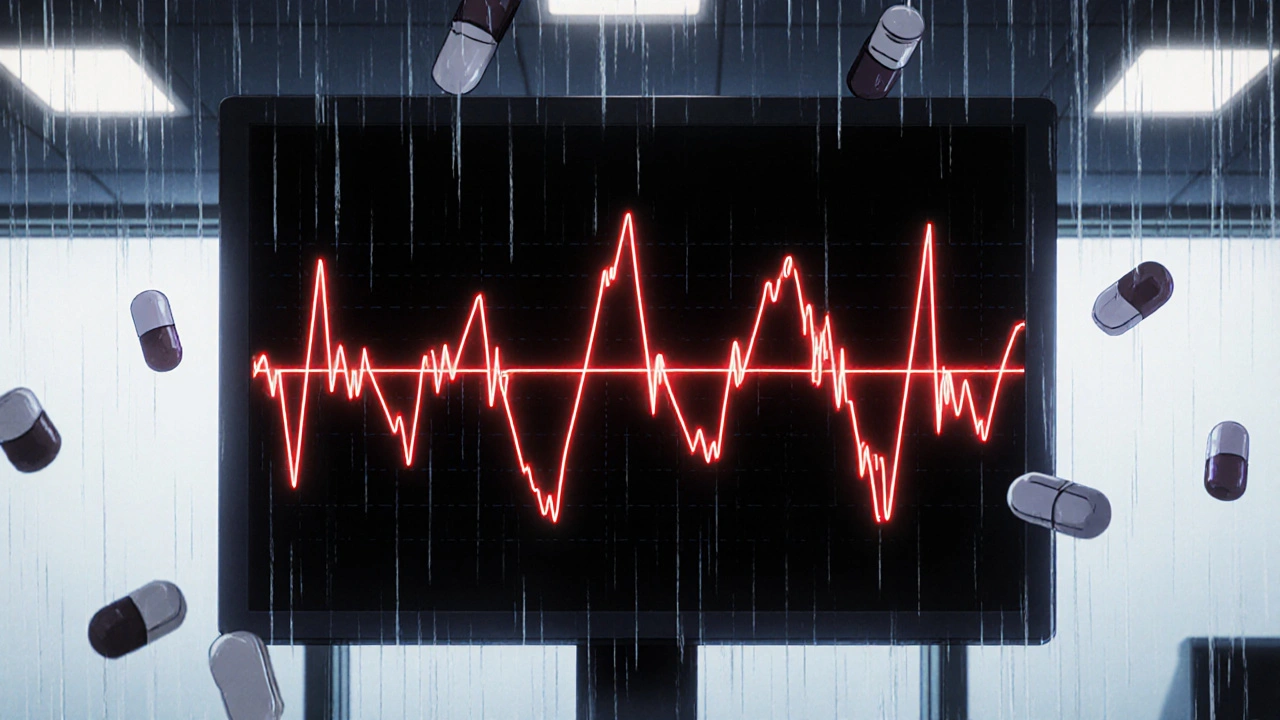QTc Interval: What It Means, Why It Matters, and How Medications Affect It
When your heart beats, it goes through a cycle of electrical charges that make the muscle contract and relax. The QTc interval, a corrected measurement of the time between the start of the Q wave and the end of the T wave on an ECG, representing ventricular repolarization. Also known as corrected QT interval, it’s a key sign doctors watch to make sure your heart’s electrical system isn’t out of balance. If this interval gets too long, your heart can develop dangerous rhythms—like torsades de pointes—that may lead to fainting, seizures, or even sudden death.
Many common medications can stretch the QTc interval. Antibiotics like azithromycin, antipsychotics like Abilify, and even some antidepressants like SSRIs have been linked to this effect. It’s not just about the drug itself—it’s about how your body handles it. Older adults, people with kidney problems, or those taking multiple meds at once are at higher risk. Even something as simple as low potassium or dehydration can push a borderline QTc into danger zone. That’s why doctors often check your ECG before starting certain drugs, and why some meds come with black box warnings.
It’s not just about the big scary drugs. Even over-the-counter cough syrups and antihistamines can play a role. And while a slightly longer QTc might not mean anything for a healthy young person, it’s a red flag when combined with other risk factors. The real danger isn’t the number on the screen—it’s when that number gets ignored. Many people don’t know their QTc is long until something bad happens. That’s why understanding this concept matters, whether you’re on a blood pressure pill like enalapril, a mood stabilizer, or just trying to manage side effects from something like GLP-1 weight-loss drugs.
What you’ll find in these posts isn’t just theory—it’s real-world guidance from people who’ve been there. From how certain antibiotics trigger heart rhythm issues to how depression meds can silently affect your heart’s timing, the articles below connect the dots between everyday treatments and this hidden electrical risk. You’ll learn what to ask your doctor, which meds to watch for, and how to spot early signs before it becomes an emergency.
Torsades de Pointes from QT-Prolonging Medications: How to Recognize and Prevent This Life-Threatening Reaction
Torsades de Pointes is a life-threatening heart rhythm triggered by common medications that prolong the QT interval. Learn how to recognize the warning signs, which drugs are most dangerous, and how to prevent this preventable emergency.

